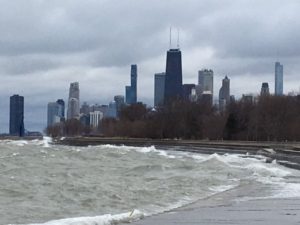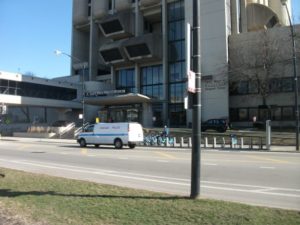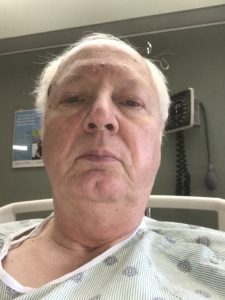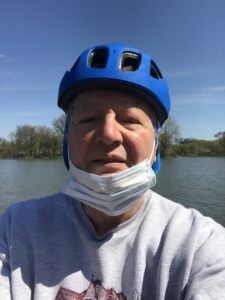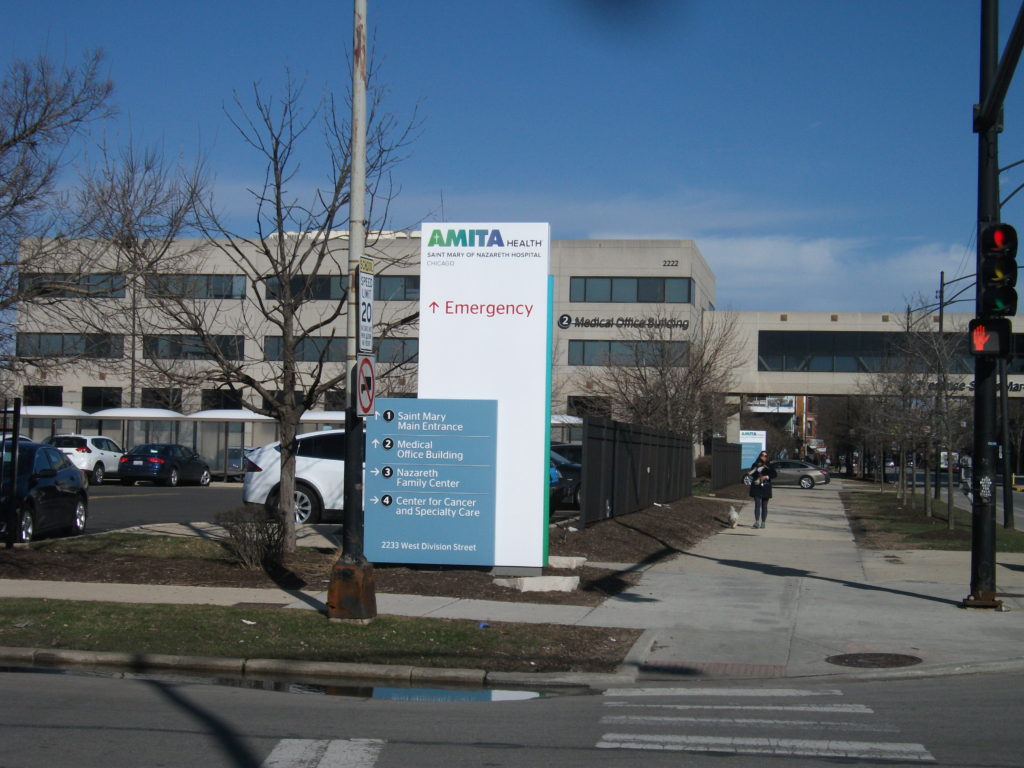In recent years, the development of local or regional recovery plans following major natural disasters has become increasingly common. The Federal Emergency Management Agency has long encouraged such planning, and I led the production of two major FEMA-funded reports from the American Planning Association on the topic—Planning for Post-Disaster Recovery and Reconstruction (PAS 483/484, 1998) and Planning for Post-Disaster Recovery: Next Generation (PAS 576, 2014). I’ve spoken repeatedly on the topic, trained planners, and valued the collective knowledge of the two teams we assembled to make those projects happen. The underlying idea is to help a community assess its losses, reassess its goals, and find the silver lining in the dark cloud of the disaster that will allow it to rebuild better and stronger than before. This is the central concept of community resilience: the capacity to learn from such events, adapt to the changes they require, and move forward.
The idea of natural disasters has generally encompassed those caused primarily by meteorological and geological disturbances, such as storms and earthquakes, though it includes impacts exacerbated by human mistakes in building and planning. Disasters necessarily involve the collision of natural forces with the human and built environment, which has caused some people to question the very use of the word “natural” in connection with disasters. Personally, I am comfortable with the term “natural disaster” so long as we understand that no disaster exists without this interaction.
But there are those disasters where damage to the built environment is a secondary consideration, and the loss of lives is primary. Drought is somewhere in the middle. Damage to structures can occur, but only as the result of the slow, nagging loss of moisture in the air and soil. Heat waves can take hundreds of lives without affecting a single structure, though they can put enormous stress on energy and transportation infrastructure.
Pandemics, however, fall into another category entirely as biological disasters. They occur when bacteria or viruses emerge in the environment and attack humans before we have developed any effective immunity or vaccines. The current COVID-19 crisis fits this mold precisely. It can be far more devastating than a natural disaster simply because it can roam far more freely across the planet, as did the 1918 influenza pandemic, striking down hundreds of thousands if not millions of people. Before the era of modern medicine, pandemics like the bubonic plague in the Middle Ages could kill half of the affected population. Even without vaccines, we at least have the huge advantage of understanding how such microbial threats spread. Our disadvantage in the U.S. has been national leadership, starting with the President, that has been psychologically allergic to scientific advice. The result has been needless loss of life on a colossal scale.
It was a matter of time before some community, even without such federal leadership, applied many of the principles of recovery planning to the coronavirus pandemic. One critical question related to recovery is identifying the point at which the crisis is over, or at least waning. In natural disasters, drought being again the exception, this point becomes clear within a matter of days, or even hours in the case of tornadoes, as the storm passes. However, weather systems such as that which produced the 1993 Midwest floods, can last for weeks or even an entire summer. But at some point, it becomes clear that the emergency is over, and planning for long-term recovery can begin. In the absence of a vaccine, however, it is less clear when we can use the “all clear” signal for a pandemic. Right now, in the U.S., it is painfully clear that the rush to reopen is producing unconscionable and shocking consequences across the South and Southwest, and in a few other locations as well. It is incredibly hard, perhaps even impossible, to plan meaningfully for recovery when you are still stoking the fire by facilitating the spread of the virus.
Nonetheless, some states, notably including New York, much of New England, and Illinois, have fought hard against the odds to bring down infection rates, which are now a fraction of what they were in April or May. Their victory remains tenuous, considering the larger national crisis that remains a growing threat to public health, but Chicago under Mayor Lori Lightfoot has announced a list of states whose residents must quarantine for 14 days upon arrival, notably including Florida, Arizona, and Texas. Later, Iowa was added. By July 17, the Cook County Department of Public Health expanded that quarantine area to include all of suburban Cook County except a handful of suburbs that maintain their own health departments, and 17 states are on the list with new case rates exceeding 15 per 100,000 people per day. While it is nearly impossible to monitor all arrivals, the message is clear: We don’t want to re-create the problems we so recently overcame.
That is the context in which a large Recovery Task Force the city assembled released a recent report, Forward Together: Building a Stronger Chicago, which examines how Chicago could build a vibrant recovery from the coronavirus experience. Because such reports, especially those involving dozens of contributors and participants, are never crafted overnight, it is worth noting that the effort was launched on April 23, at a time when the outcome was far from clear. Neither the city nor the state could be certain then how long the problem would last or whether the stay-at-home orders and other measures would succeed at all in the near term. As of July 18, Illinois had dramatically increased its testing rate and brought its positivity rate for coronavirus tests down to 2.9 percent, well below most rates elsewhere, although it remains higher in Chicago at 5.4 percent.
So far, the strict measures announced in March have produced measured success, and the task force used that time to look farther down the road to the kind of city that might emerge from this ordeal. Forward Together is, to be clear, not a true recovery plan; it is billed as an “advisory report.” But it is the closest thing to a recovery plan that I have seen so far, and merits scrutiny and consideration for what it offers. (New York Mayor Bill de Blasio promised his own “road map to recovery” on April 26.)
The task force itself was broadly based. Lightfoot co-chaired it with Samuel Skinner, a businessman, lawyer, and political operative who served as both Secretary of Transportation and White House Chief of Staff under President George H.W. Bush. He has a long track record in public affairs. Committee chairs and members included elected officials, among them Cook County Board President Toni Preckwinkle, who was Lightfoot’s run-off opponent in the 2019 mayor election, labor and community representatives, business leaders, academicians, and civic leaders, including some prominent activists. The task force was broadly inclusive, which bodes well for public buy-in on the resulting recommendations. Moreover, the report shows significant evidence of wide community outreach, including a youth forum that tapped the ideas of teens and young adults.
Like all big cities, Chicago has witnessed significant disparities in impacts of the pandemic on specific disadvantaged groups, including the elderly, but also Blacks and Latinx residents. While these two groups each comprise 28 percent of Chicago’s population, they respectively comprise 30 and 48 percent of the cases of coronavirus and 44 and 32 percent of the resulting deaths. This is an important backdrop to the discussion of goals in the report.
The report discusses four specific initiatives to move the city forward and address many of the inequities and vulnerabilities exposed by the coronavirus. Invest South/West aims to bring public and private investment to those neighborhoods in the city that have suffered historic disinvestment, and where COVID-19 rates have generally been highest. Racial and ethnic inequities in coronavirus impact have been notably more severe among both Blacks and Latinx residents, in large part because of lower levels of insurance coverage but also because of differences in job exposures, poverty levels, and living conditions. Solutions Toward Ending Poverty (STEP) is a new program, announced in February by Lightfoot, that is attempting to identify evidence-based metrics that can plot a road map toward reducing urban poverty in Chicago. We Will Chicago—Citywide Plan aims over three years to develop what amounts to a comprehensive plan, something lacking in Chicago until now. The report says We Will Chicago “will encompass all elements of citywide planning.” Finally, Chicago Connected will aim to shrink the digital gap between more affluent and poorer neighborhoods by making broadband more readily available, a need whose urgency has clearly been exposed by the closing of schools and the challenges of assisting children from poorer households with remote learning.
A significant part of the report focuses on the economic development opportunities that Chicago can pursue to restore prosperity as the pandemic recedes. It is clear that certain categories of jobs—food service, retail, administrative, and manufacturing, but also arts and entertainment and personal services—have suffered the brunt of economic displacement from the pandemic. The report notes the opportunity for Chicago, as a result of some economic changes wrought by the pandemic, including shifts to online retail, to focus on transportation, distribution, and logistics (TDL) segments of the economy. These would take advantage of a longstanding Chicago advantage as a transportation hub.
TDL, however, faces its own challenges of inequitable opportunity. Food insecurity represents a serious challenge in “food desert” neighborhoods. Resolving those inequities is the intended purpose of the four initiatives, but it is hardly a challenge that will be resolved overnight. It has taken years of unequal opportunity, to say nothing of deliberate discrimination, to create the current dilemma. Failure to address these problems will slow down or even stagnate Chicago’s recovery from the current crisis.
The report makes what strikes me as an honest effort to address social services gaps that, if anything, grew under the previous administration of Mayor Rahm Emanuel, who closed some mental health centers in a bid to reduce budget deficits. The problem is that such reduced access to services only exacerbates problems among those needing such help and may increase other costs as a result. For example, a significant proportion of the inmates at the Cook County Jail (and many others around the nation) suffers from mental illness.
There is an urgent need to restore those services, but more importantly, the report shows that mental health services are far more prevalent on a per-person basis in more affluent, whiter neighborhoods than in poorer areas. For instance, 48 percent of whites with mental illness were receiving services in 2015, but just 31 percent of both Blacks and Latinx with mental illness were doing so. A map toward the end of the report shows differences shows a variation in presence of mental health providers ranging from zero or well below 0.25 per thousand residents in certain poorer areas of the city to well over 2 in predominantly white, middle-class areas and hundreds per thousand in downtown Chicago, a district well-nigh inaccessible to many South Side residents.
This may reflect, among other things, a disproportionate presence of white professionals in mental health and a need to bring more minority psychiatrists and psychologists to those neighborhoods. Reopening clinics in the neediest areas of the city would be a major step forward. As for the connection to coronavirus, the stress induced by greatly increased unemployment, to say nothing of job pressures within health care, can contribute to mental health challenges. Perhaps the most noteworthy proposal in this section of the plan is the recommendation to create a dedicated 211 line whereby residents can access a wide range of social services. It strikes me as essential, also, to reduce pressure on police to respond to personal mental health crises by instead responding to such incidents, to the extent possible, with mental health professionals and social workers.
As I noted, this is framed as an “advisory report.” I strongly suspect, however, given the tenor of the moment, that its recommendations will find widespread support among Chicagoans. What remains to be seen is how well voters and aldermen hold the administration’s feet to the fire to make it all happen. It is not enough to have confidence in a mayor who seems determined to make it happen. Implementation will require broad-based commitment to achieving the goals the report lays out. That includes embedding those goals in the comprehensive planning process that We Will Chicago envisions, and enacting measures to move them forward.
What is important about this effort for the rest of the country is the very idea of mounting such a broad-based effort to produce a forward-looking analysis of how our cities can recover from the coronavirus pandemic. Many may first have to learn how mayors and governors can exert the leadership, and evince the humility to consider the science, necessary to get the virus under control, as many other countries in Europe and Asia have done. These leaders must also be open to hearing from a widely representative cross-section of their citizens in preparing similar reports. Pandemic recovery planning is for all of us an experiment that can build on the foundations of other kinds of recovery plans while recognizing and thoroughly exploring the unique features of this monumental public health challenge. It is no small matter, and should not be treated as such, politics notwithstanding.
Jim Schwab

